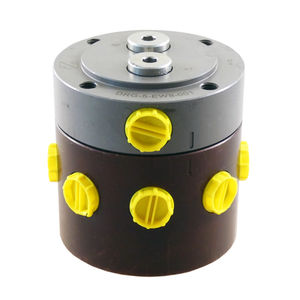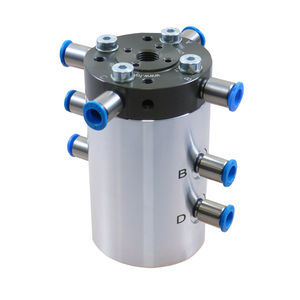
Friction coupling 500-3airtorque
Add to favorites
Compare this product
Characteristics
- Type
- friction
- Product applications
- air
- Other characteristics
- torque
- Torque
16 Nm
(11.801 ft.lb)
Description
Rotary couplings without/with leakage recirculation
Rotary couplings transfer hydraulic oil from a fixed to a rotating machine part. The assembly is done in the rotation axis of the subassembly. Depending on the number of junction levels several single-acting or double-acting hydraulic elements can be connected. On principle, the rotary coupling is only suitable for hydraulic oil. If pneumatic shall be transferred, the catalogued elements can be used providing that the air is filtered and lubricated to guarantee seal greasing and corrosion protection.
In the design stage it needs to be considered that the rotation movement is obstructed by the seal friction. This frictional drag is pressure dependant and must be considered for the drive torque of the rotary table. Corresponding information can be found in the reling diagrams which show the starting torques existing while all junction levels are pressurised.
Special features:
axial and radial connections in the piston
available without and with leakage recirculation
appropriate for pneumatic and hydraulic systems
combinable with multiple coupling systems (KDS)
combinable with electrical slip rings as a special design
standard designs and special designs available
Important operating instruction:
For the operating circumstances, operating pressure and torque must be aligned. Please see the diagrams on data sheet 500-3.
Mounting instruction:
The rotary coupling must be mounted in a way that no transverse moment is effected on the standing or rotating element.
Catalogs
No catalogs are available for this product.
See all of HYDROKOMP‘s catalogs*Prices are pre-tax. They exclude delivery charges and customs duties and do not include additional charges for installation or activation options. Prices are indicative only and may vary by country, with changes to the cost of raw materials and exchange rates.



